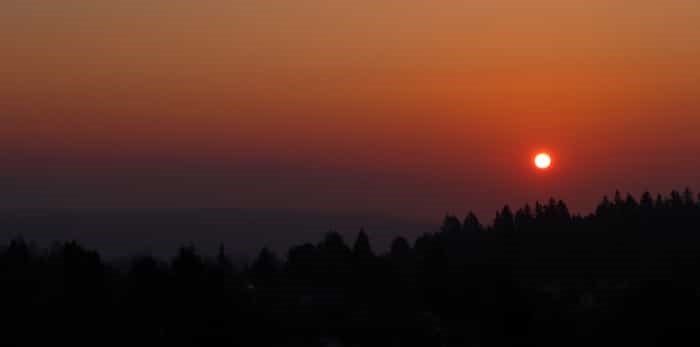 Hazy sunrise in Vancouver, red sun through the wildfire smoke / Shutterstock
Hazy sunrise in Vancouver, red sun through the wildfire smoke / Shutterstock
A recent Greenpeace report has listed the world's most polluted cities and a few B.C. ones made the list.
The environmental organization notes that although the average air quality is good in global comparison, North American air quality was greatly impacted in August and November. In fact, five out of ten of the most polluted cities during August were found in Canada and the United States.
Two of the five worst cities were located in B.C. - Quesnel and Prince George. Further, Williams Lake narrowly missed the top ten worst cities. More hectares of B.C. forests burned in 2018 than ever before, and air quality was affected across the province as a result.
With this in mind, South Asia saw a disproportionately high number of polluted cities - a whopping 18 out of 20 of the most polluted cities in the world are found in the region.
The organization also notes that air pollution will claim roughly seven million lives next year. Further, it notes that this will cost the world an estimated $225 billion USD.
“Air pollution steals our livelihoods and our futures, but we can change that. In addition to human lives lost, there’s an estimated global cost of 225 billion dollars in lost labour, and trillions in medical costs. This has enormous impacts, on our health and on our wallets," said Executive Director of Greenpeace South East Asia, Yeb Sano.
"We want this report to make people think about the air we breathe, because when we understand the impacts of air quality on our lives, we will act to protect what’s most important.”
The World Air Quality Report also notes that Northern America is one of the regions with lowest PM2.5 levels represented in its report. However, it highlights that 18 per cent of cities still exceeded the WHO annual target in 2018.
“Local and national governments can help tackle the effects of air pollution by providing adequate monitoring and reporting infrastructure. What is clear is that the common culprit across the globe is the burning of fossil fuels — coal, oil and gas — worsened by the cutting down our forests. What we need to see is our leaders thinking seriously about our health and the climate by looking at a fair transition out of fossil fuels while telling us clearly the level of our air quality, so that steps can be taken to tackle this health and climate crisis,” added Mr. Sano.


